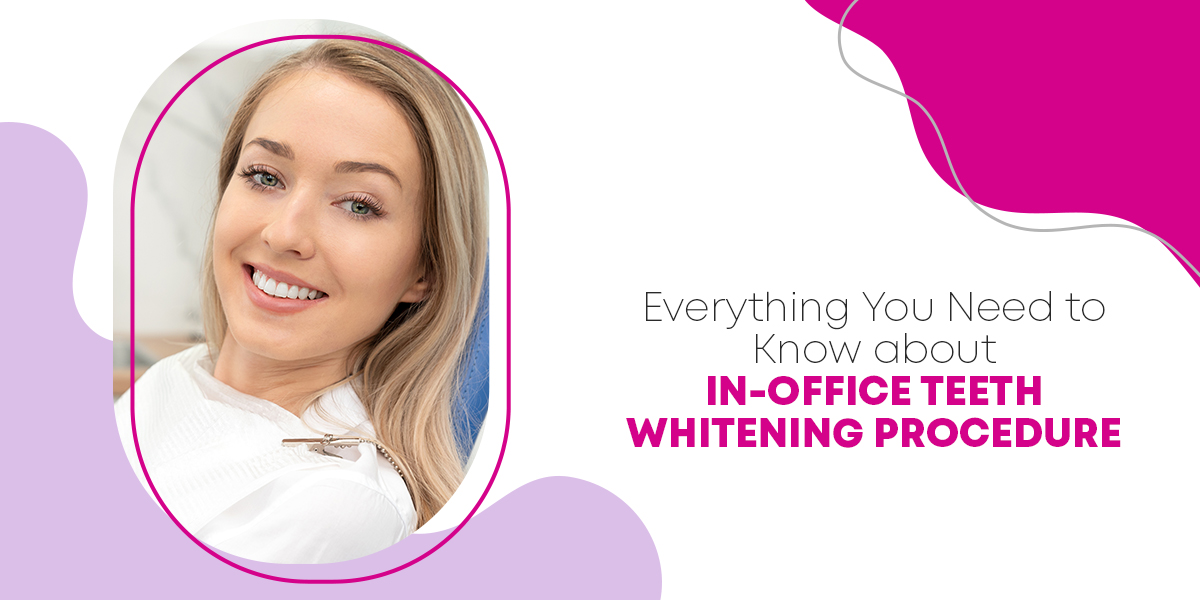Located at 20 Old Brompton Road – Just Steps from ![]() South Kensington Tube. Easy Access, Always.
South Kensington Tube. Easy Access, Always.
Located at 20 Old Brompton Road – Just Steps from ![]() South Kensington Tube. Easy Access, Always.
South Kensington Tube. Easy Access, Always.

There are different whitening procedures that your dentist may suggest changing the colour of your teeth. When you have stain marks or tooth discoloration, chances are your teeth may be damaged further if you do not treat them. Talk to a dentist who can suggest the right dental procedure for your problem. It is advised that you try to follow good dental hygiene to keep your teeth and gums strong and healthy. This blog post discusses the important steps you should consider when thinking of an in-office teeth whitening procedure for whiter and brighter teeth.
Before taking the decision to undergo whitening, you need to have professional and thorough dental cleaning. All kinds of stain marks and tartar should be removed.
This step can help to improve the overall appearance of your teeth.
About touch up cleaning
When the whitening session starts, the dentist will clean your teeth by using a polishing paste to ensure that any stains or debris have been removed properly.
You need to talk to your dentist about how effective any bleaching session has been in the past. The dentist will provide documentation related to pre-treatment colour of your teeth before making the comparison.
Use a guide to select dental shade
The dentist will compare different samples from a shade guide with the colour of your teeth. After this, he or she will find the best match and record it.
The peroxide whiteners used with the professional whitening method may cause irritation or damage soft tissues so teeth need to be isolated.
After the gel has been applied, your dentist will use a curing light on it. This way, a catalyst in the gel gets activated that causes it to be set in just a few moments.
The ultimate result will be an obstacle that seals around each tooth. It will prevent the whitener from coming into contact with the adjacent gum tissue.
The dentist will use bleaching agent and whiteners of professional grade that are either gel based or a thick paste and will be painted or dabbed onto the surface of each teeth being treated.
The protocol used with in-office methods is activation of whitener with a laser or bleaching light.
The light causes a reaction within the whitener which increases the effectiveness.
Activating the light may not be used universally by all dentists. For this reason, it can be said that
The appointments for an in-office bleaching can be done within 60 to 90 minutes, based on the specific product being used.
About sensitivity
It is quite possible that you may suffer from sensitivity during treatment.
Based on what takes place, the dentist will decide if he can lessen the treatment time or skip one or more cycles of applying the whitener.
After the teeth are exposed to whitener for the required time, it will then be suctioned off. Your teeth should also be washed thoroughly.
Next the dental dam and other isolation devices or materials that are used can be removed.
Before the procedure and after the bleaching session, the dentist will assess the shade of your teeth to find out how much whitening has occured.
Many dental experts in this field will not consider assessing shade-change immediately after the in-office procedure. This is because the teeth being treated may dry out during the whitening procedure. When this occurs, they will lighten fast and the lightening affects you see are not related directly to the use of a whitener.
Your dentist may suggest a fluoride treatment after the whitening session is done.
Applying the fluoride may help to reduce the problem of thermal sensitivity to your teeth that takes place when you eat or drink hot and cold foods or beverages.
There are some whiteners which may be slightly acidic in nature so, Fluoride may help in the promotion of remineralization in these areas.
Your dentist will suggest that you do not consume stain causing drinks such as – tea, coffee, colas, red wine, or tobacco products including smoking during the first 24 hours after the bleaching session.


